The 10 Best Full-Fat Foods for Weight Loss
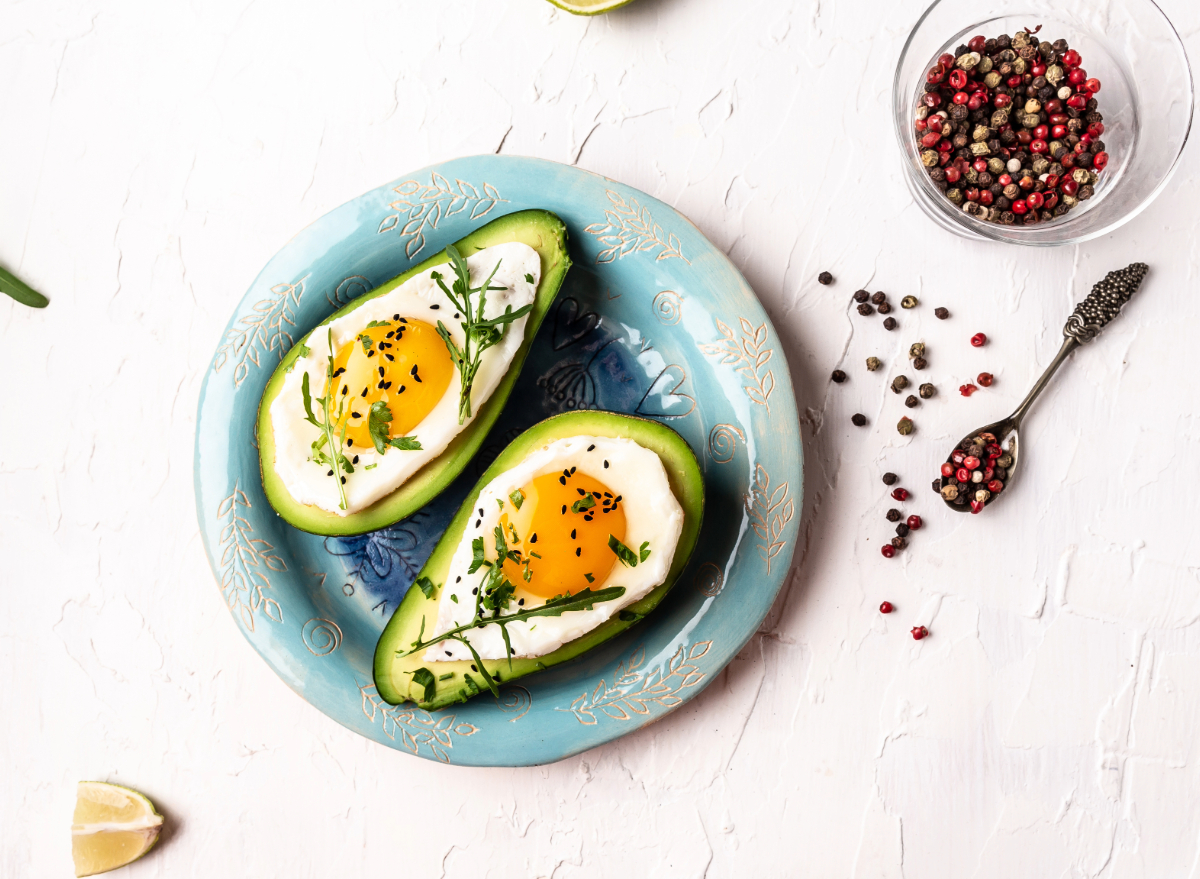
If weight loss is your goal, then the term “full-fat” might raise your eyebrows. Full-fat foods are often associated with indulgence, but what if we told you that embracing certain full-fat foods could be a game-changer on your journey to shedding those extra pounds? In this article, we chatted with Catherine Gervacio, RND, a registered nutritionist-dietitian and certified exercise nutrition coach at EHProject, who shares 10 of the best full-fat foods for weight loss that will satisfy your taste buds.
For years, it’s been widely believed that leaning toward low-fat or fat-free options is wise for those wanting to lose weight. However, a growing body of research and nutritional wisdom is challenging this paradigm. The National Institutes of Health states that you don’t need to avoid full-fat foods for weight loss as long as they’re healthy fats and not saturated fats, which can increase weight gain and chronic disease risk. Healthy fats include monounsaturated fats (MUFAs) and polyunsaturated fats (PUFAs).
If you’re ready to debunk the myth that all fats are created equal, read on for Gervacio’s recommendations for the best full-fat foods that offer nutritional and weight loss benefits. And next up, don’t miss The #1 Best Fruit To Eat for Weight Loss, According to Dietitians.
Avocado
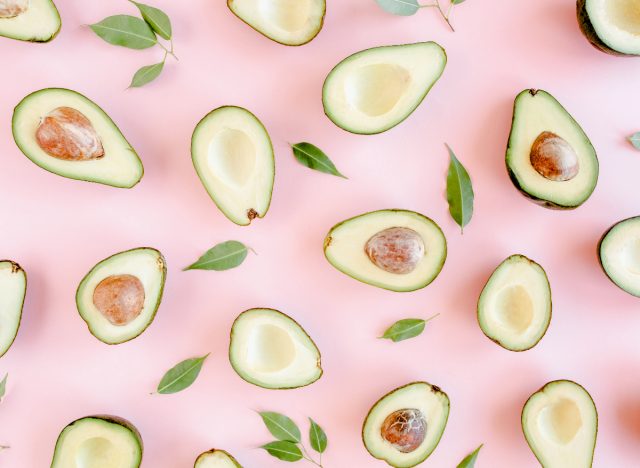
“Avocado is rich in healthy MUFAs, which helps in the feeling of fullness and satisfaction after meals,” says Gervacio. “Evidence suggests that this type of fat can contribute to increased metabolic rate, therefore aiding in weight loss.” Adding a moderate amount of avocado to your meals might just be the secret to satisfying your hunger and getting you one step closer to your weight loss goals.
Nuts
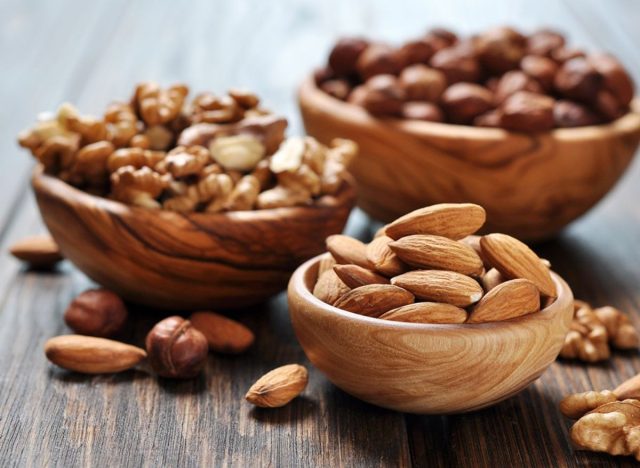
Packed with essential nutrients, fiber, and healthy fats, nuts provide a perfect nutritional balance that keeps you feeling full and energized.
“Nuts are packed with healthy fats that increase satiety and provide sustained energy to curb cravings between meals. Their fat content mixes MUFAs, PUFAs, and saturated fats. Despite this profile, studies suggest that nut consumption can reduce the risk of obesity.”
Olive Oil
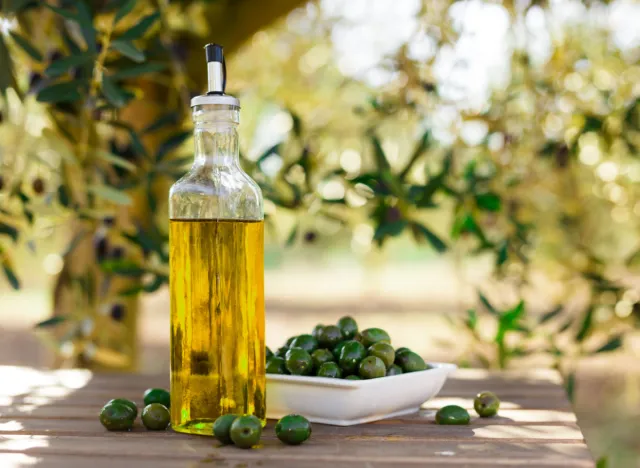
Often celebrated as a cornerstone of the Mediterranean diet, olive oil’s monounsaturated fats and antioxidants make it a heart-healthy choice for weight loss.
“The antioxidant content of olive oil has anti-inflammatory effects,” Gervacio explains. “Chronic inflammation is associated with obesity,” Gervacio adds, so reducing inflammation could aid in your weight-loss efforts. “Olive oil is considered a heart-healthy and beneficial replacement for unhealthy fats. This improves overall dietary patterns to achieve health while losing weight.”
Fatty Fish
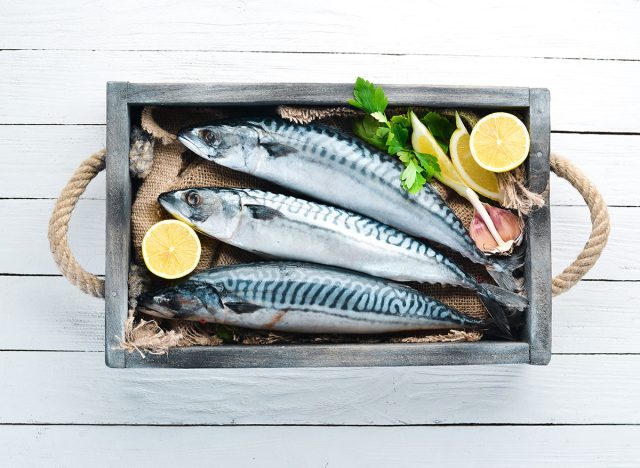
“Fish like salmon or mackerel are rich in omega-3 fatty acids that promote heart health and weight loss,” says Gervacio. “These fatty acids can potentially inhibit fat storage by influencing the genes and enzymes involved in fat metabolism. This may result in a lower accumulation of body fat.” These fatty fish are also packed with protein, an incredibly satiating macronutrient that can help curb cravings.
Dark Chocolate (70%-80% Cocoa)
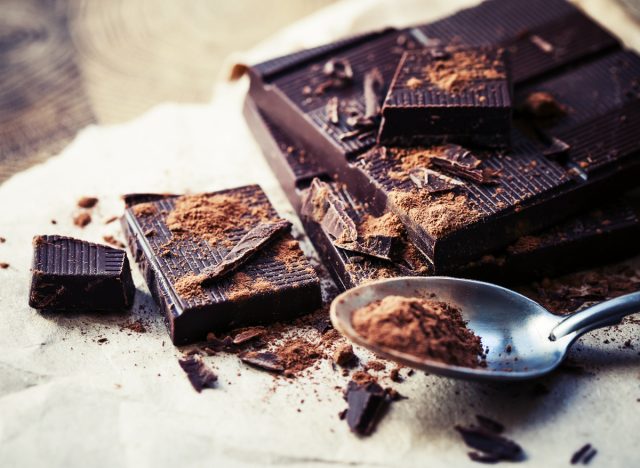
Yes, you read that right—studies show that chocolate can be a part of your weight loss journey, but with a caveat. Look for dark chocolate with a cocoa content of 70 percent or higher. The higher percentage means it contains less sugar and more healthy fats.
Gervacio tells us, “This type of chocolate can combat sweet cravings without overindulging. Also, cocoa’s caffeine and theobromine content may contribute to the mild stimulating effect on metabolism.”
Cheese
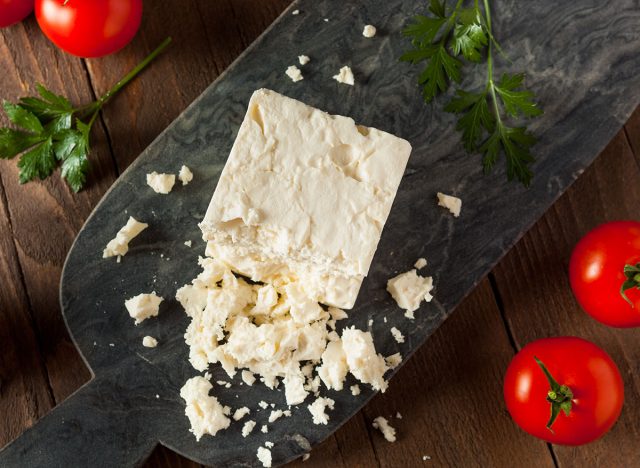
While moderation is key, incorporating cheese into your diet can provide a good source of fats, protein, and essential nutrients like calcium. Some excellent cheese varieties include feta, goat cheese, or mozzarella.
“Cheese is a good source of protein, which contributes to the feeling of fullness because it takes longer to digest. Protein also supplies amino acids for building leaner muscles. Also, the nutrient content of cheese, like calcium, vitamin B12, and phosphorous, is necessary for overall health, so it supports healthy weight loss,” says Gervacio.
Seeds
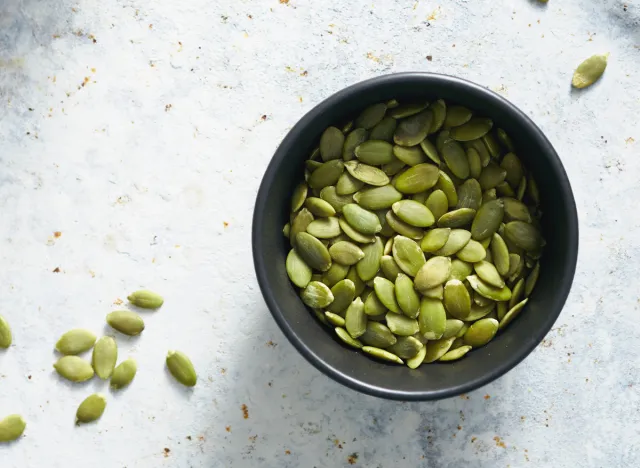
“The fat and fiber content of seeds contributes to the feeling of fullness and reduced chances of cravings,” states Gervacio. “The fiber, particularly, slows digestion and absorption of nutrients, including carbohydrates. This results in a gradual release of glucose in the bloodstream, preventing rapid spikes and crashes in blood sugar levels, influencing hunger and cravings.”
Whether chia seeds, flaxseeds, or pumpkin seeds, these tiny powerhouses are rich in healthy fats, fiber, and essential minerals. Sprinkle them on yogurt and salads, or incorporate them into smoothies for a nutrient-dense, full-fat boost.
Eggs

Boiled, scrambled, or in omelets, eggs are a protein-rich, full-fat food that can provide a satisfying start to your day while supporting long-term weight loss.
“Eggs contain high-biological proteins and healthy fats. This combination contributes to appetite control and supplies the body with sufficient amino acids. Eggs are a common food for people who want to burn fat while increasing lean muscles, combined with a workout program,” says Gervacio.
Granola
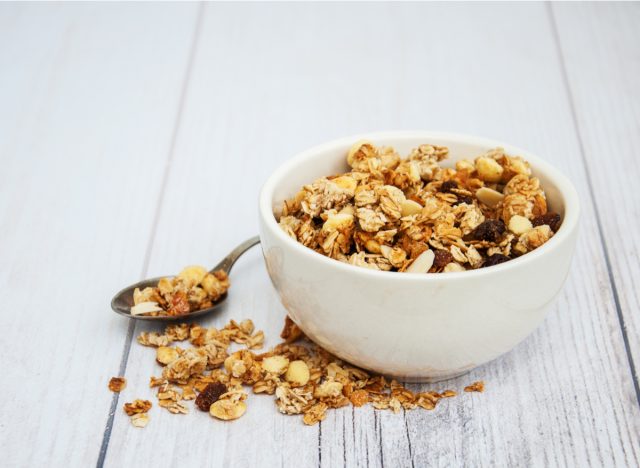
Packed with nuts, seeds, and sometimes dried fruits, granola can be a crunchy, satisfying addition to yogurt or enjoyed with milk. However, watch out for added sugars, and choose a high-quality granola product for a wholesome, full-fat treat.
Gervacio says, “Some granolas have fats as their binding ingredient and nuts for fiber and protein. This makes them a full-fat food. The combination of complex carbohydrates, nuts, and fats provides a steady release of energy for supporting physical activity. Regular exercise is an important component of healthy weight loss, and granola is an easy snack for energy while doing activities to burn calories.”
Yogurt
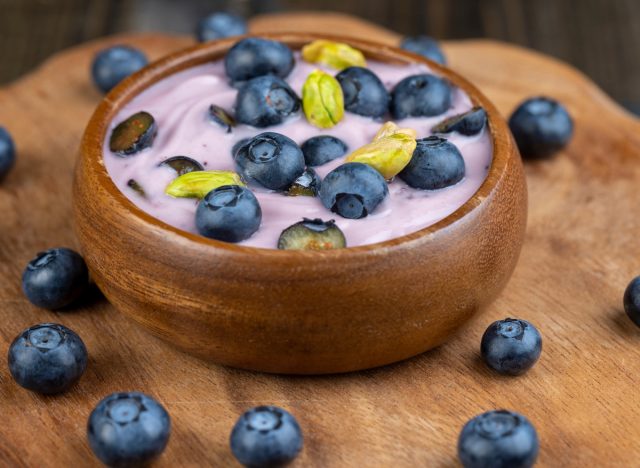
Beyond its creamy texture, full-fat yogurt provides probiotics, calcium, and protein, making it a nutritious choice for those looking to lose weight. Pair it with fruits or granola for a delicious and satiating snack that aligns with your weight loss goals.
“Yogurt supplies protein and probiotics,” says Gervacio. “Probiotics may help in insulin sensitivity to regular blood sugar levels. This can help in weight loss.”
- Source: The Skinny on Fat
- Source: A highly saturated fat-rich diet is more obesogenic than diets with lower saturated fat content
- Source: Monounsaturated Fat vs Saturated Fat: Effects on Cardio-Metabolic Health and Obesity
- Source: Long-term associations of nut consumption with body weight and obesity
- Source: The Efficacy of an Energy-Restricted Anti-Inflammatory Diet for the Management of Obesity in Younger Adults
- Source: Protein, weight management, and satiety
- Source: Eating dark and milk chocolate: a randomized crossover study of effects on appetite and energy intake









